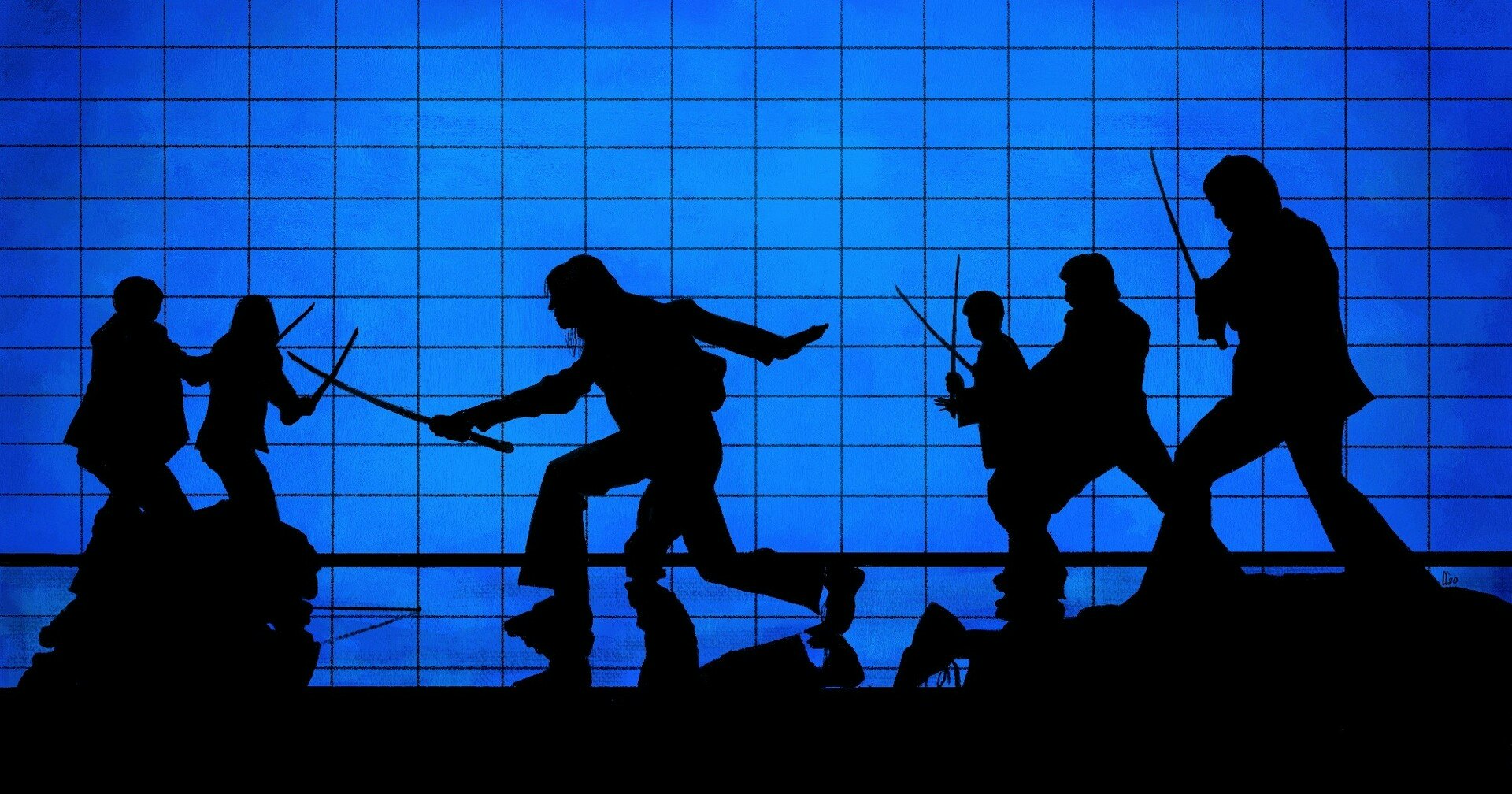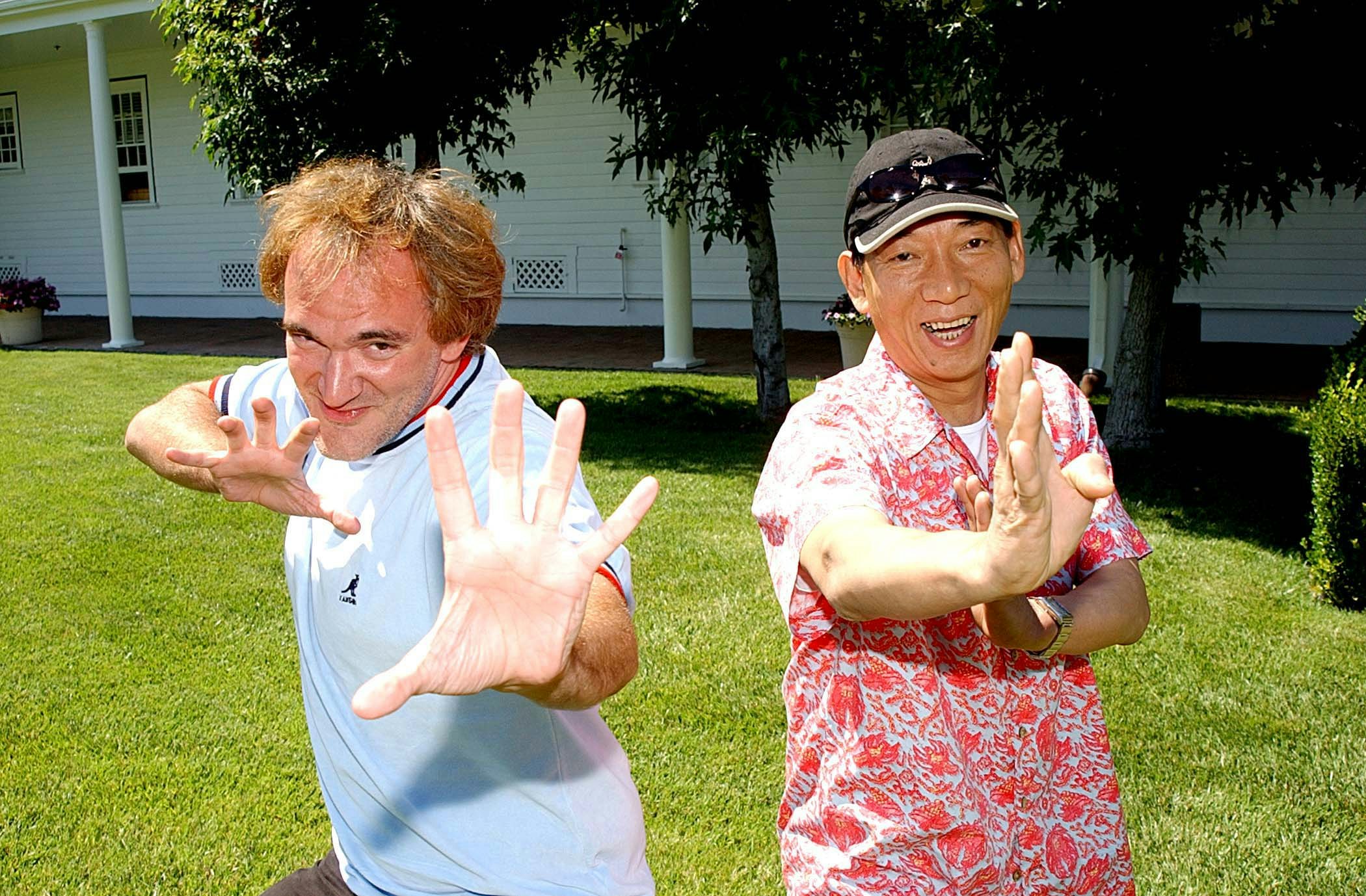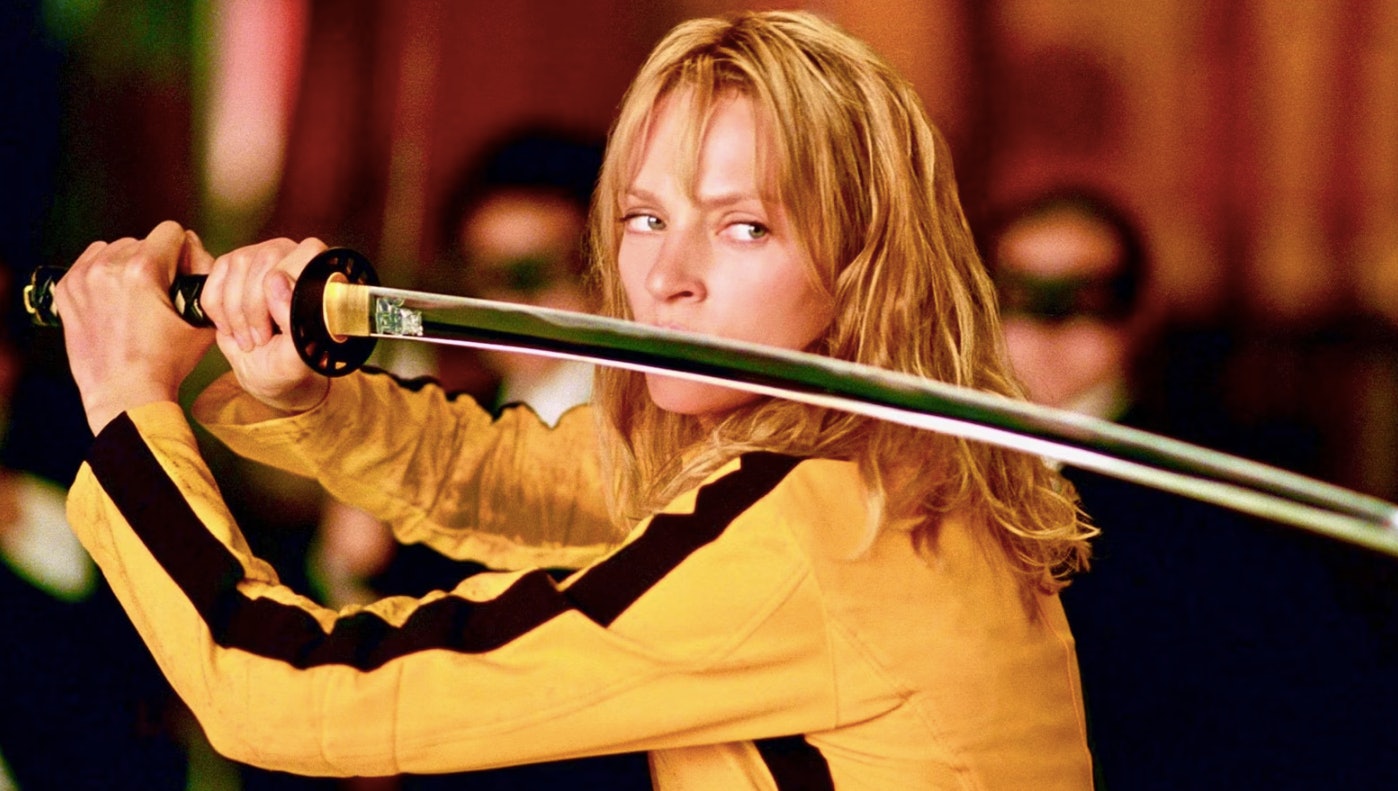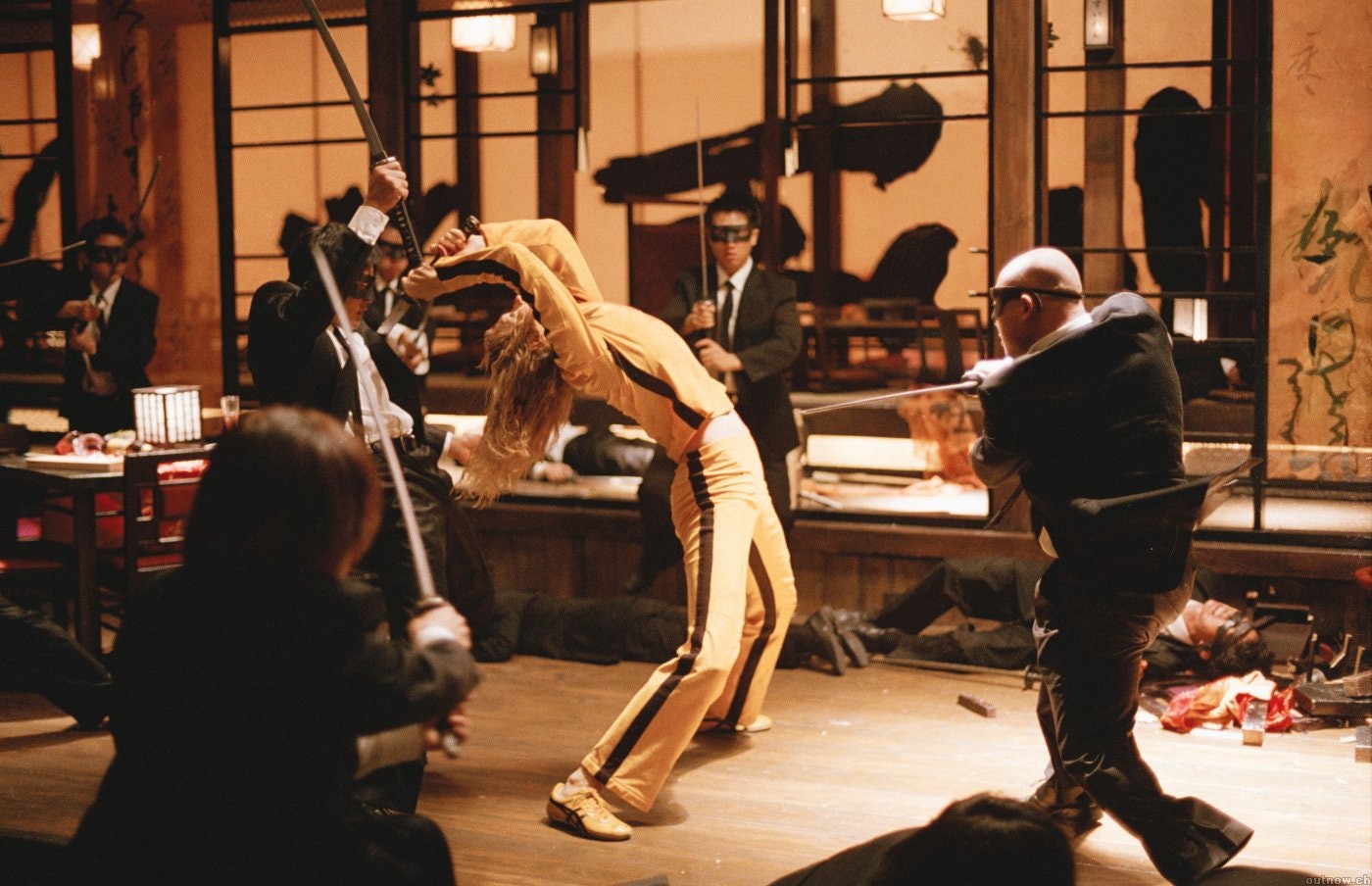
Over his first decade of moviemaking, Quentin Tarantino resisted capturing a big action sequence. Sure, the prodigious writer-director counted on violence — both implied and explicit — to fill up the frames of Reservoir Dogs, Pulp Fiction, and Jackie Brown. But that trio of black-humored and hard-boiled yarns mostly skipped over mass carnage and relied on extensive, verbose dialogue and dramatic storytelling. Gunshots, tortures, and blood stains only served as stylized punctuation. Until Kill Bill.
Leaning into his love for spaghetti westerns, grindhouse cinema, and kung fu classics, Tarantino turned his fourth-directed feature into a globe-trotting revenge tale about an unnamed “Bride” (Uma Thurman) questing to kill her former boss and the team of assassins who left her for dead on her wedding day. Unlike his previous filmography, Kill Bill Vol. 1, released in October of 2003, never skimps on guts and gore throughout the Bride’s death tour, leading to a third-act confrontation that turns a two-level night club into a slaughterhouse. It’s one of the most inventive, balletic, and bloodiest action spectacles in cinematic history.
The scene follows Thurman as she slices her newly carved Hattori Hanzo sword through the Crazy 88, a Yakuza army of contracted martial artists shielding her nemesis, O-Ren Ishi (Lucy Liu). In blistering fashion, the Bride takes on the horde of swordsmen inside the House of Blue Leaves. Severed limbs and heads erupt into crimson geysers that soak the dance floor. Throughout this war zone, Tarantino intersperses a mosaic of references and homage, changes color schemes, and adds a variety of loony and thrilling musical cues and sound effects. After seven thrilling minutes, all that’s left is a soundtrack of moaning, limbless gang bangers and a carpet of corpses.
But none of this would been possible without Woo-ping Yuen, the legendary martial arts choreographer and stunt coordinator Tarantino enlisted to build out this acrobatic nightmare. A former martial artist, Yuen eventually migrated to the director’s chair for 1978’s Snake in the Eagle’s Shadow and Drunken Master, which combined comedy and action and put Jackie Chan on the map. Twenty years later, he pivoted to Hollywood, providing martial arts choreography for The Matrix and bringing his inventive wire work to Crouching Tiger, Hidden Dragon. As Tarantino conceived his third act, he knew he needed Yuen to orchestrate his imagination.
“I hadn’t seen Quentin’s films before I met him, but I had heard he was a unique director,” Yuen tells Inverse. “He sent me the script. It was a great read, and once I met him, I knew he was a visionary director who wanted to do something special with Kill Bill.”

To pull off the complex set piece, Yuen needed several months to train actors and determine how so many bodies would function together inside a makeshift space. Though the House of Blue Leaves is based on the real nightclub Gonpachi, co-production designer Yohei Taneda recreated a version of it — tables, dance floors, lighting fixtures, balconies, and silk screens — on a sound stage at the historic Beijing Film Studio.
“The rest, [Tarantino] left up to me,” Yuen says. “The important part for me was that even though the scene is over the top, it had to be believable.”
Before the Crazy-88 showdown, Tarantino glides through various levels and corners of the building, establishing every inch of the soon-to-be cage match. Under the supervision of cinematographer Robert Richardson, the camera follows the Bride as she slips down a hallway and behind a paper screen. It then pivots to follow the club’s owner and waiter carrying drinks up the stairs to O-Ren’s second-floor private room. The tracking shot concludes its circular motion to observe Sophie (Julie Dreyfus), one of Bill’s former assassins, as she walks downstairs past a band and group of dancers and into the bathroom — where the Bride is waiting to strike.

After the Bride slices off Sophie’s arm in front of gawking patrons, O-Ren quickly dispatches her personal bodyguards for some 1-on-1 matchups. One of them involves a fight with schoolgirl Gogo (Chiaki Kuriyama), whose innocent blazer-skirt outfit masks her sinister abilities with a meteor hammer, a razor-bladed sphere attached to a chain. A few months removed from giving birth, Thurman had no kung-fu experience but dedicated herself to the craft alongside Yuen and various stunt actors to be ready for the choreographed combat.
“Chiaki started training around the same time as Uma,” Yuen says. “I hadn’t worked with ball and chain specifically, but I’d used a rope dart and a cloth stick. So we used techniques from those weapons as a starting point.”
“They still hurt if you get hit, but it won’t injure you.”
Because Tarantino shot in sequential order, the hardest work was still ahead of the production. As he diagrammed the fight sequencing for the Crazy 88 attack, in which bands of Yakuza gangsters encroach the dance floor from every corner, Yuen knew he’d need to utilize Hong Kong cinema’s signature wirework and the club’s multi-level architecture to make the Bride’s improbable killing spree possible.
“Uma hadn’t done a movie like this before, so we had to establish her character as someone who could reasonably fight 88 killers,” Yuen says. “That’s why I had Uma get a height advantage as the numbers grew. It created a chase element and broke the fight into smaller pieces.”
Some of those smaller pieces include a hatchet spinning in slow-motion past Thurman, or a head decapitation that splatters blood over her opponents. The close-ups and varied speeds only accentuate the skill and isolated sounds that often get blurred through this non-stop exhibition. “We used bamboo swords wrapped in soft material in everything except a closeup of a sword,” Yuen says. “They still hurt if you get hit, but it won’t injure you.”

Later, to single out individual fighters, Thurman attempts a balancing act up a staircase banister to reach the second-floor railing. As she tightropes up with wired assistance, Richardson’s crew created an unmanned camera track that could keep pace with the actor’s angled run, further immersing the audience into her cartoonish abilities.
“To get the necessary speed, it had to be filmed with a camera that wasn’t ‘operated,’” key grip Herb Ault told ASC. “We set the linear track up on the same angle as the banister, with pulleys rigged on it so we could move it as fast as a person at a run.”
These kinds of tricks and various levels allowed Yuen to put together a more convincing fight that could evolve and keep his fighters in perpetual motion.
“It is very difficult to make a group fight scene look good,” he says. “With a group, I want the people in the background to be fighting their hardest, not looking like they are waiting for their turn to join the fight. So having the height to work with on set helped solve this problem. The assassins are trying to get the Uma and she’s creating separation, which makes her character more believable.”

At one point, the Bride snatches an eyeball from the socket of a Yakuza thug. In an instant, the scene shifts to a black-and-white color scheme, a referential nod to older samurai movies, but also a practical measure to appease the MPA. As a way to keep the movie’s “R” rating, Tarantino opted for grayscale, keeping the stylized violence but erasing the color in the middle of the massacre. At the sequence’s end, he returns to a silhouetted set piece against a blue backdrop.
“Something I've noticed is that when it comes to Americans, it's not so much they have a problem with blood; they have a problem with the color red,” Tarantino told The New York Times.
“Uma put in an incredible amount of work. She got so good she did most of her own stunts.”
Throughout the scene, which took a month to shoot, the filmmaking team overcame numerous challenges. They built bilingual flashcards for the Chinese production crew, constructed moveable sets to assist crane shots, and utilized hundreds of gallons of blood. Most importantly, Thurman mastered the martial arts components, giving her scenes fluidity and allowing Richardson angles he might not have gotten with a primary stunt double substituting for each precarious situation.
“Uma put in an incredible amount of work,” Yuen says. “She got so good she did most of her own stunts, including wirework.”
Two decades later, the sequence remains an iconic part of Tarantino’s filmography, embedded into the pop-cultural consciousness. Beyond solidifying him as a capable action director, it accentuated his commitment to creating an inventive and overwhelming sensory experience while leaning on the pioneers — like Yuen — who shaped his early passions.
“It was a great tribute to Hong Kong and Japanese cinema while making it modern and fun,” Yuen says. “It opened up Asian action films to a new generation of audiences.”
It’s all the legendary choreographer could have wanted.
“The film has a very special place in my heart.”







